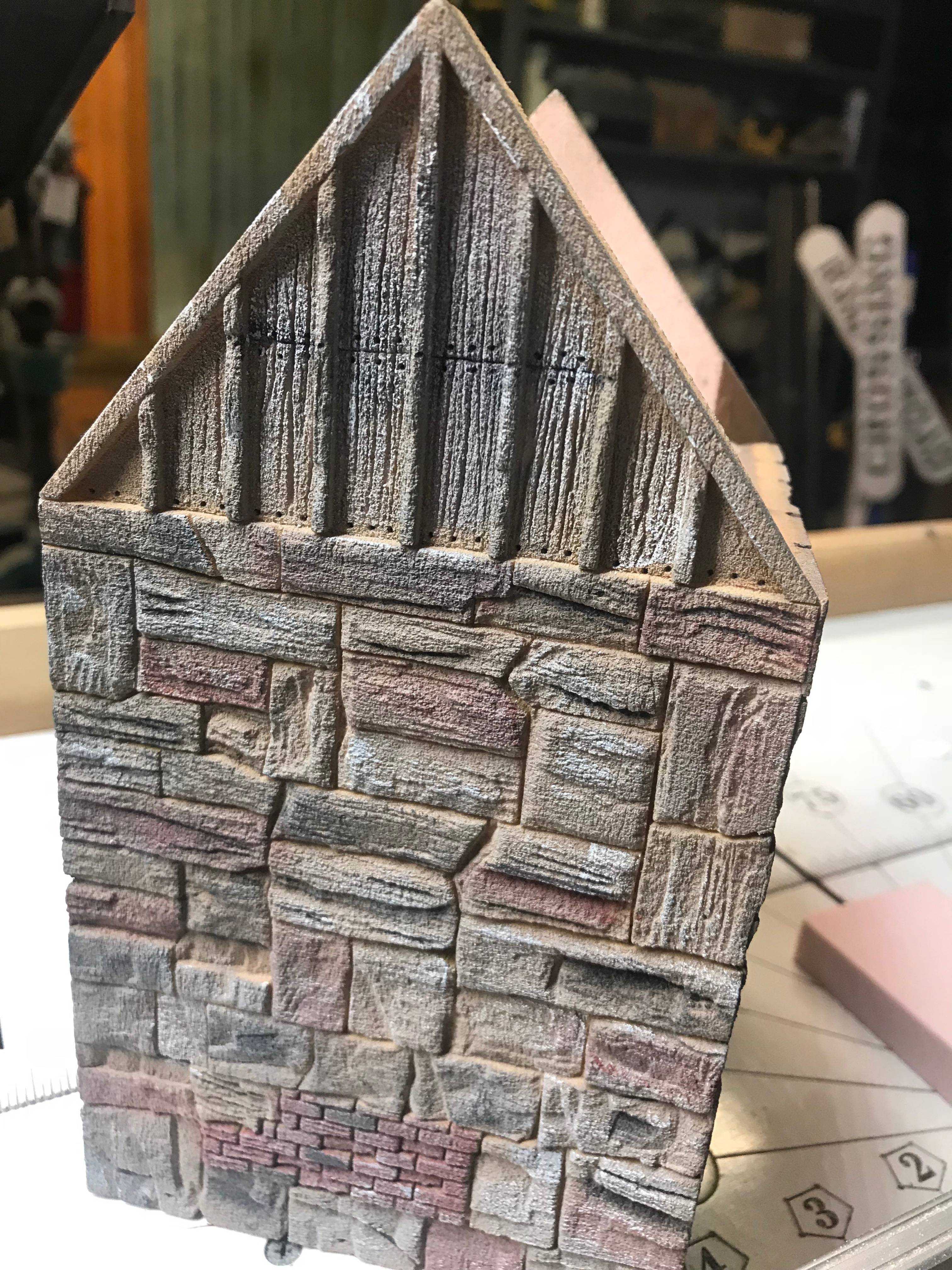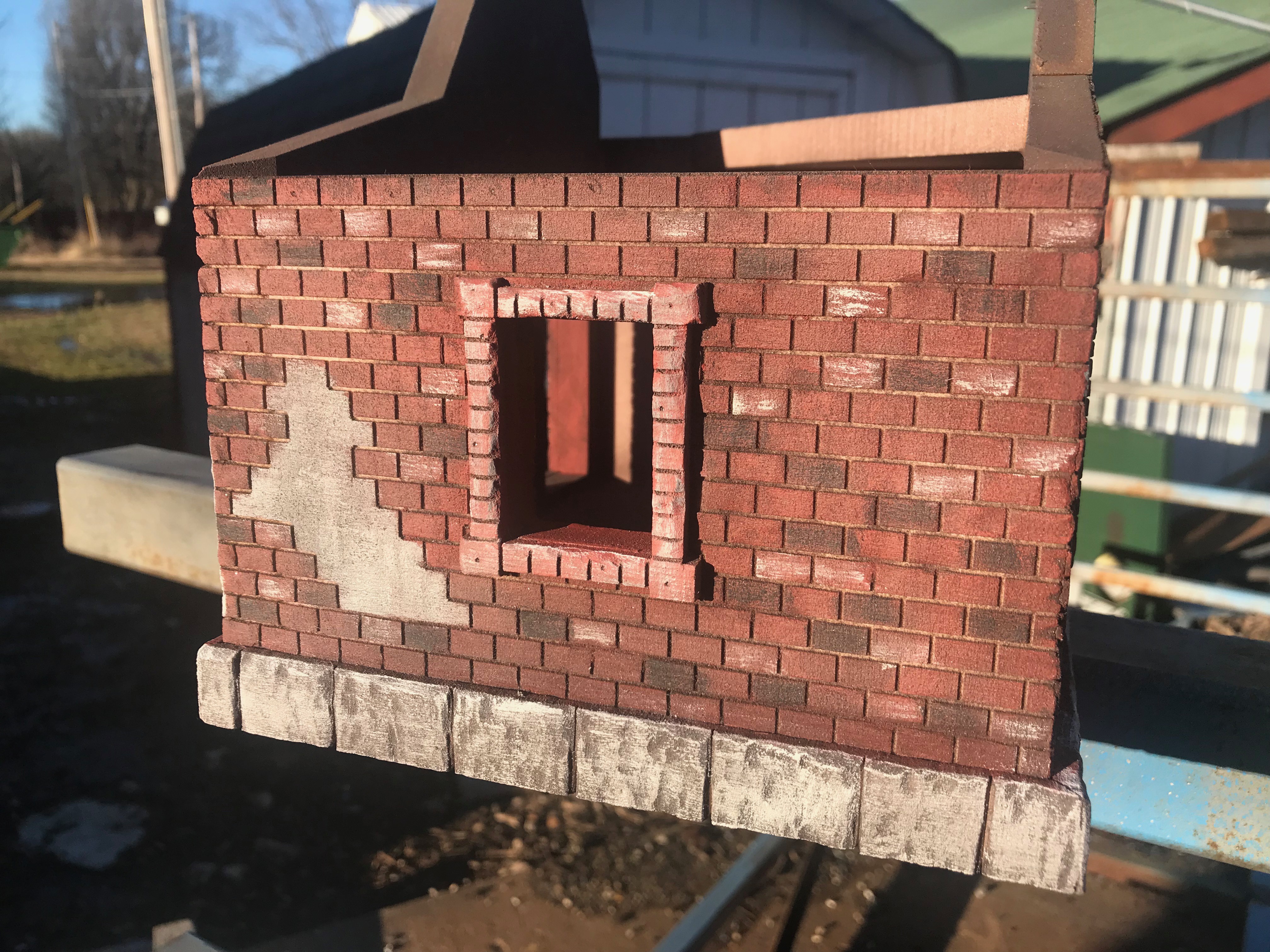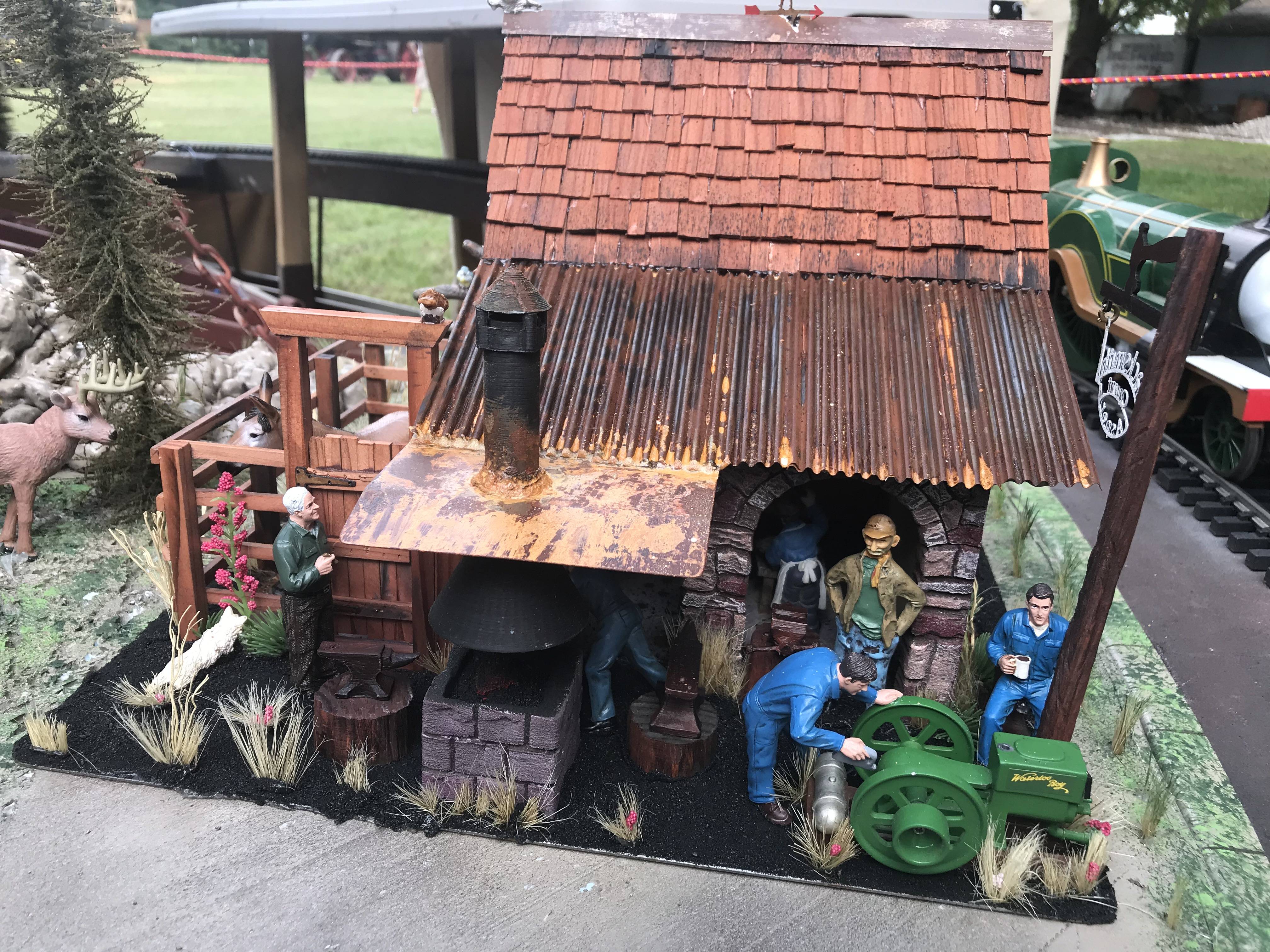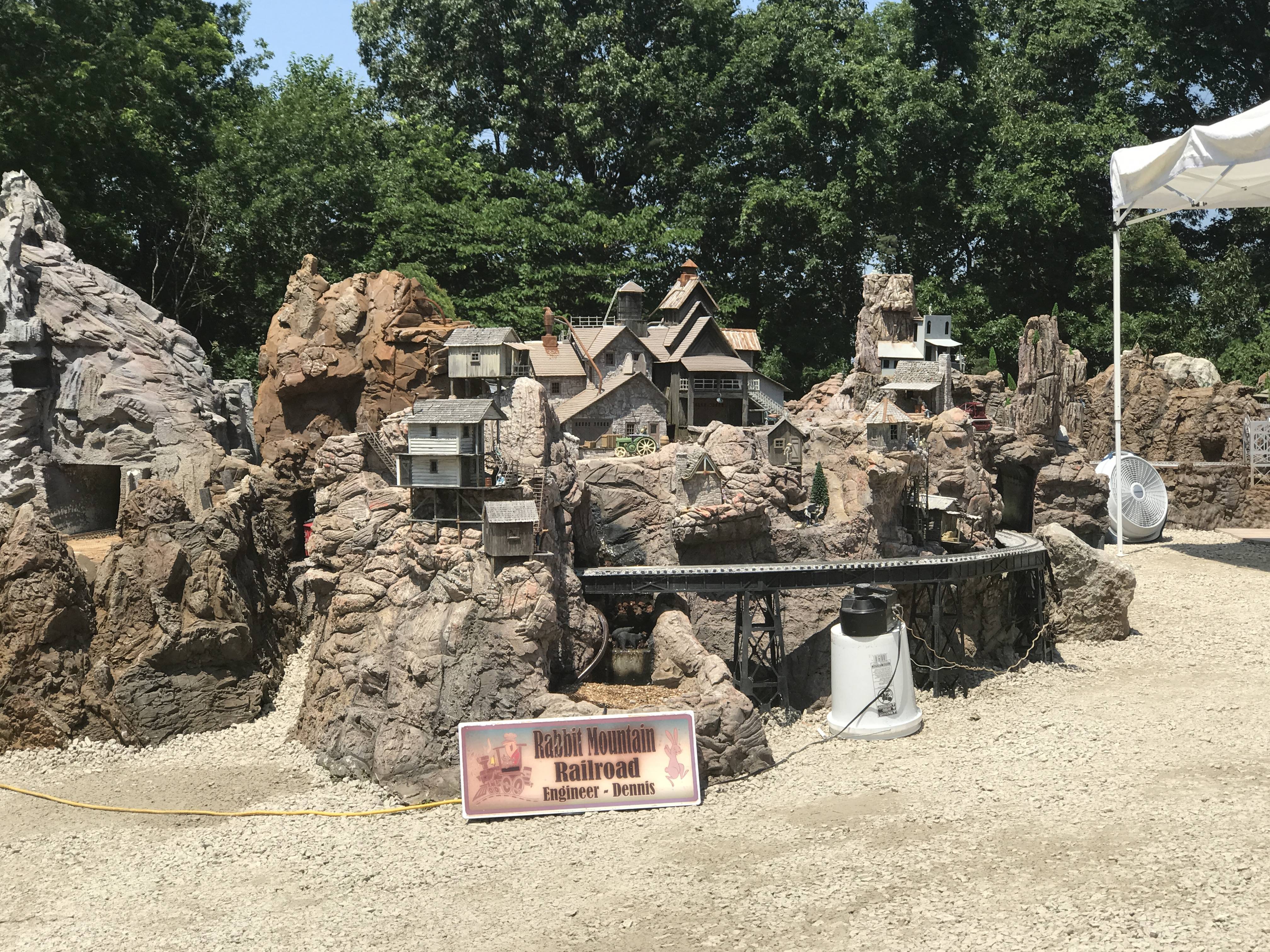Dennis Rayon is the owner of Denray Machine in Missouri, but he’s also an avid model railroad builder. He uses a laser machine & hand-carving tools to recreate highly-detailed buildings from the mid-1900s out of PBLT-15 Precision Board high-density urethane. We caught up with him recently to delve a little deeper into how he creates such fantastic looking wood, stone & brick out of Precision Board HDU.
Dennis Rayon uses sheets of PBLT-15 Precision Board HDU that are a ½ inch thick. He laser-engraves the basic shape into the HDU using CAD drawings and then uses carving tools to add the fine details. He says you have to be a little savvy on your designs, but it’s not a problem for him- he’s been on CAD for 20 years.
“Precision Board is so soft that you can easily carve and model it, but it’s also durable.” Dennis adds, “you can take your thumbnail and put grooves in it to make cracks or use a tool that’s a little bit round to make the surface smooth.”
He uses his laser to engrave all the details, including things like windows, bricks, stones, etc. He also cuts the pieces out of the sheet with his laser.
“I like that Precision Board gives me the ability to get the effects of something like a door. I don’t have to make the doors or buy the doors- it’s all one piece of material.”
Dennis says, “I’ll recess some of the bricks to give it depth. I like the brick look. I can pretty well get Precision Board HDU to do whatever I want, whether it’s making stone or brick.” He adds, “it’s also a great material to make stucco with. You just lay it flat and sand out the spots to make it look a little thinner.”
According to Rayon, it’s easy to get a stone effect on HDU with hand-carving.
“Stone varies so much in thickness and depth that your front is not going to be even.” He continues, “but that’s the beauty of Precision Board- you can copy almost exactly how stone walls are built in the real world.”
Rayon directs our attention to a brick and stone wall on his Flickr feed.
“Around the window is an outlay of stone that is set off from the wall. I lasered down the rest of the wall around it to make the stone frame stick out.”
The big white stone along the very bottom of the wall, however, is an add-on.
Dennis says, “I cut an overlay of stone on the bandsaw and then textured it with chisels.” He adds, “I glued it onto the building after it was completed so that the stone sticks out on the bottom.”
When Dennis glues his model railroad buildings together, he uses waterproof glue because they will be subjected to outside weather. He also miters all his seams on a 45 degree angle.
“I do all four corners and let it dry overnight. I put my floor in there to square it up and add a hole for lights to be added later.”
Dennis uses real aluminum and wood for his model railroad roofing.
“I cover the buildings with aluminum and use actual pieces of redwood to make the roof shingles.”
He says, “I use real steel and make a roller to corrugate it for the tin roofs. That’s real rust you see on my model railroad buildings because it’s actually made from metal.” Dennis adds, “the inside of the building stays dry if it gets wet from rain having an actual metal and wood roof.”
Rayon says he’s not a garden railroader. Rather he’s a model railroad person outside. He likes to make his buildings into moveable pieces.
“I like to put two inches around my buildings to leave room for details. When I set this on the ground, it already has bushes and men, etc. I can pick up the building in one piece and move it or take it inside.”
Dennis has some thoughts on protecting your model railroad buildings from the outside world.
“The summer is what kills your buildings, especially plastic buildings. Heat and UV rays kills the glue. I’d rather leave my buildings outside during the winter and bring them in during summer.” He says, “I’ve done a lot of buildings that are for outside. I spray all my buildings with clear coat, but the sun still has an impact on them.”
Precision Board HDU itself holds up very well in an outdoor environment and in all different kinds of weather, including rain, snow, and sun. It makes an excellent choice for exterior signage as well as themed objects that will be in the direct sun for several hours a day.
He spray paints his buildings with a regular Rustoleum-type paint and then takes a brush and brushes it.
Rayon says, “I do it with a medium brown and that gives me the shadow effect, but it also gives me the paint that will protect the Precision Board so that the sun doesn’t deteriorate it.”
Dennis uses a Krylon brown and then brushes it all in so that it gets down into the cracks and crevices of the HDU and gives a weathering effect.
You can view Dennis’s extensive Flickr photo stream here to see a lot more in-process photos and completed buildings and pieces.
Dennis Rayon owns Denray Machine Inc. in Mt. Vernon, MO. They manufacture down draft tables and dust funnels. They can be contacted through the website or by calling 800-766-8263. Denray Machine is also on Facebook, Twitter and YouTube.
Coastal Enterprises manufactures Precision Board HDU, a versatile, cost-effective and eco-friendly urethane sign material that is particularly effective for making professional-looking indoor and outdoor dimensional signs. It is a closed-cell rigid substrate that does not rot, warp or crack. You can request free samples, get a quote or sign up for periodic newsletters packed with helpful information.



